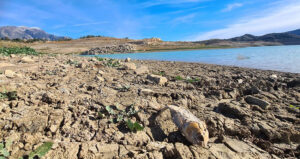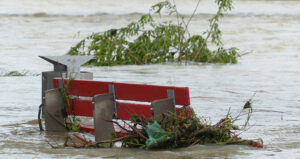EEA: Climate change hits Europe and causes severe damage

-
 Editorial Team
Editorial Team
Share article:
Last year climate change set new records in Europe. Higher temperatures, rising sea levels and less sea ice in the Arctics had a huge impact on ecosystems, the economy and on human health and well-being. This is in a nutshell the message of the European Environment Agency (EEA) in the report Climate change, impacts and vulnerability in Europe 2016 that was published on the 26th of January 2017.
Wet regions in Europe got wetter and dry regions drier. Glacier volume and snow cover are decreasing. At the same time, climate-related extremes such as heat waves, heavy precipitation and droughts, increased in frequency and intensity in many regions. Improved climate projections show that climate-related extremes will increase further in many European regions.
Climate change hotspots
Southern and south-eastern Europe can be seen as a climate change hotspot, as it is expected to face the highest number of adverse impacts. This region is already experiencing large increases in heat extremes and decreases in precipitation and river flows, which have heightened the risk of more severe droughts, lower crop yields, biodiversity loss and forest fires.
More floods
Coastal areas and floodplains in western parts of Europe are also seen as hotspots as they face an increased risk of flooding from rising sea levels and a possible increase in storm surges. Climate change is also leading to major changes in marine ecosystems as a result of ocean acidification, warming and the expansion of oxygen-depleted dead zones. Although some regions may also experience some positive impacts, such as improving conditions for agriculture in parts of northern Europe, most regions and sectors will be negatively affected.
Uncertain costs
The economic costs of climate change can be very high. Climate-related extreme events in EEA member countries account for more than EUR 400 billion of economic losses since 1980. Available estimates of the future costs of climate change in Europe consider only some sectors and show considerable uncertainty. Still, the projected damage costs from climate change are the highest in the Mediterranean region. Europe is also affected by climate change impacts occurring outside Europe through trade effects, infrastructure, geopolitical and security risks, and migration.
Essential adaptation strategies
“The scale of future climate change and its impacts will depend on the effectiveness of implementing our global agreements to cut greenhouse gas emissions, but also ensuring that we have the right adaptation strategies and policies in place to reduce the risks from current and projected climate extremes”, said Hans Bruyninckx, EEA Executive Director. During the Eureau congress (19-21 september) in Copenhagen Bruyninckx already warned that to ensure a safe water supply in the future there is no time to lose. “Everything we do today, will be around in 2050.”
Policy support
The latest Climate Change report was produced by the EEA in collaboration with the Joint Research Centre of the European Commission, the European Centre for Disease Prevention and Control, the World Health Organisation Regional Office for Europe and three European Topic Centres (ETC-CCA, ETC-BD, ETC-ICM). It is the fourth ‘Climate change, impacts and vulnerability in Europe’ report, which is published every four years. This edition aims to support the implementation and review process of the 2013 EU Adaptation Strategy, which is foreseen for 2018, and the development of national and transnational adaptation strategies and plans.

















